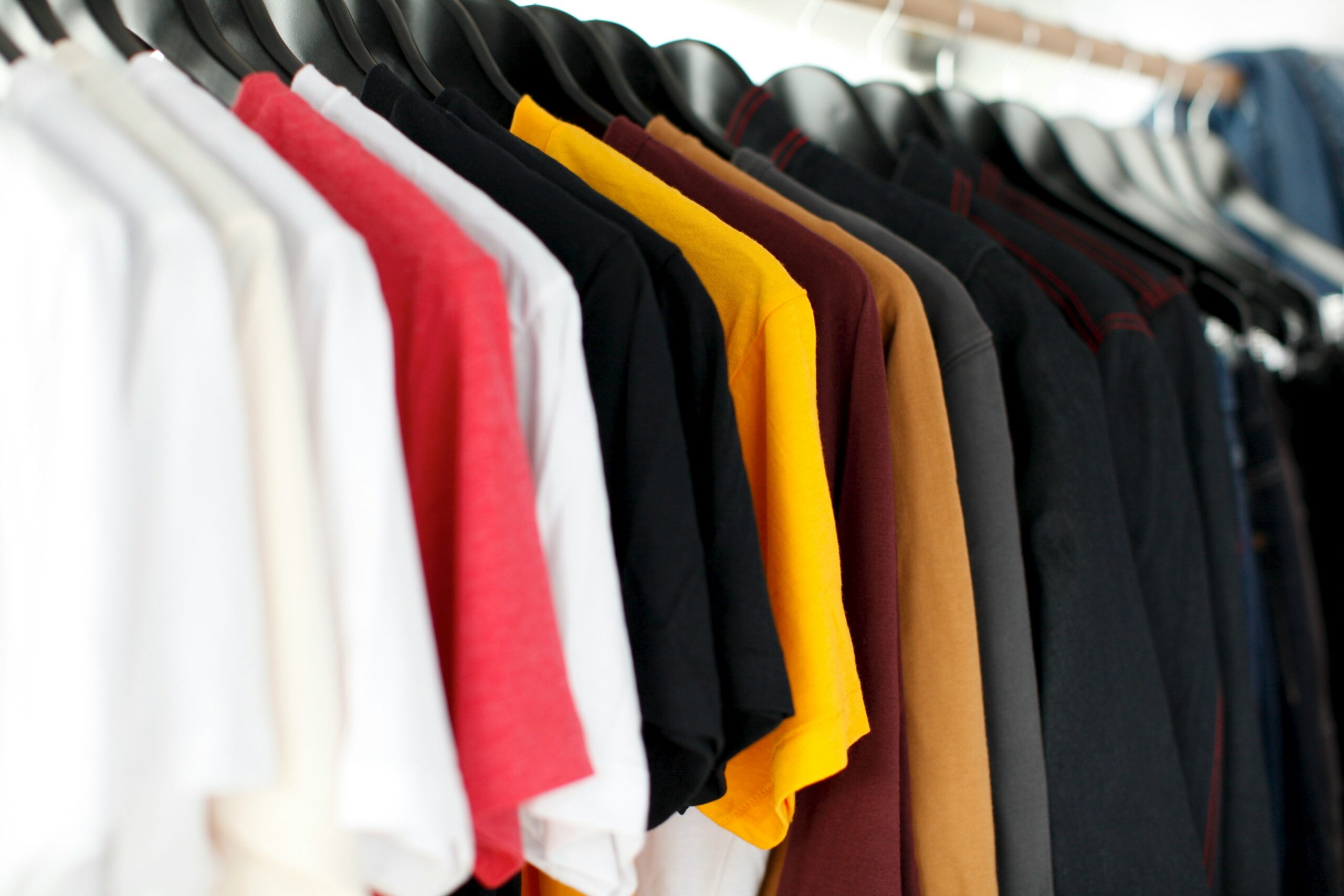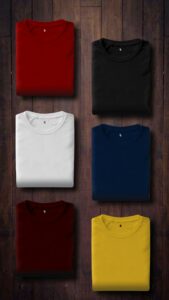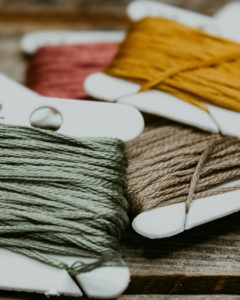When decorating your apparel, there are two primary choices – screen printing and machine embroidery designs. On a very basic level, the difference between these two mediums is that one uses thread to create an image while the other uses ink. However, there are actually plenty of other reasons to choose one medium over the other.
How to Choose Between Screen Printing and Embroidery Machines
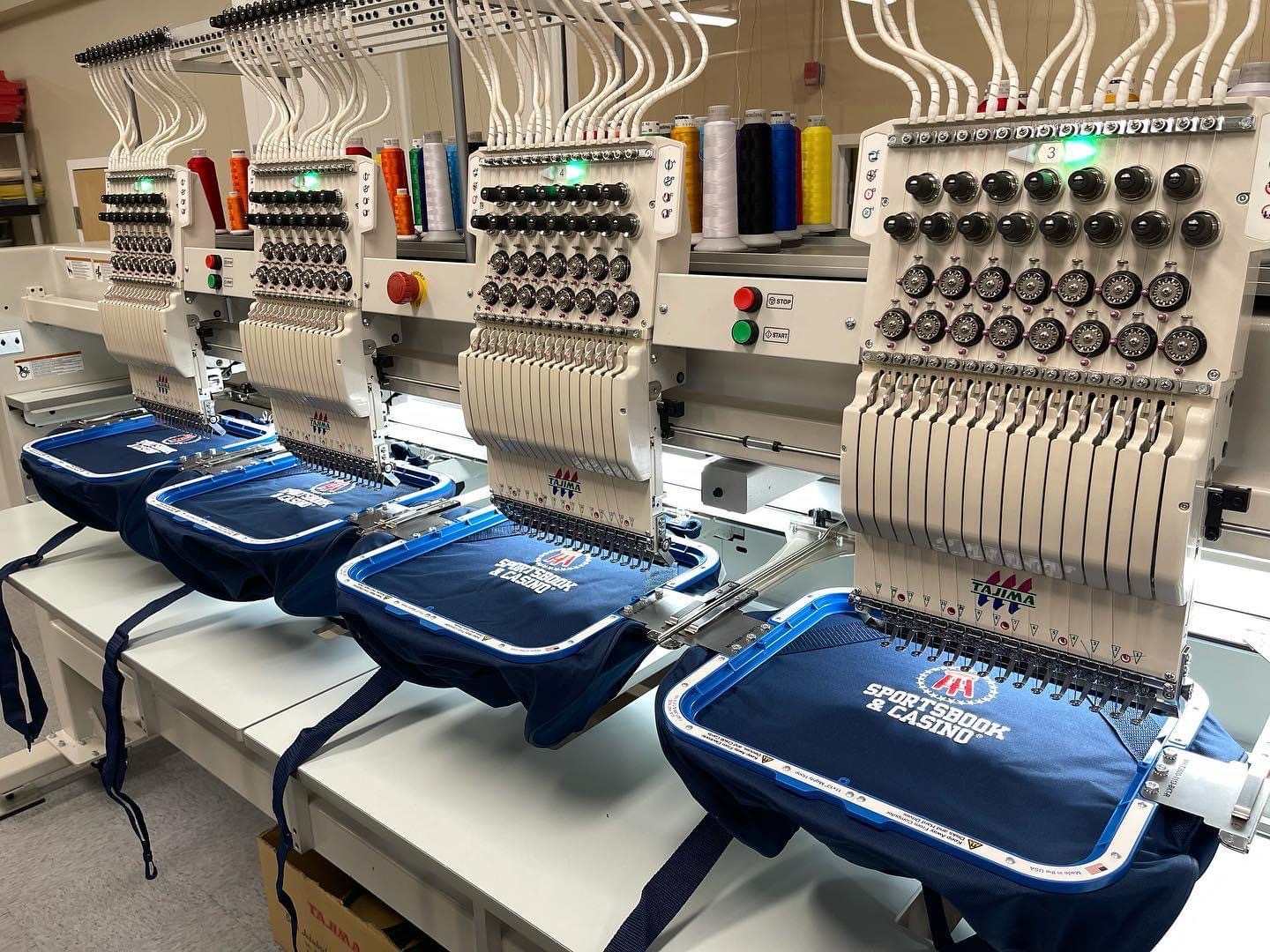
Embroidered Designs
When it comes to expense, effort, and product quality, what should a consumer expect when they submit an embroidery file? Let’s take a look at what a savvy consumer can look for when deliberating over embroidery vs. other clothes-making options.
Setup
The very first thing that has to happen is a DST file for embroidery has to be created to replicate the artwork. This happens using a digitizing software that plots coordinates for machine embroidery designs to be stitched. Remember X & Y coordinates on graphs? This is the same idea —for more on creating embroidery files, check out EDG’s embroidery process. Computer software will read an embroidery file and plot points and how many needles will be needed to be used for the different colors in an image.
Feel
Machine embroidery designs use thread to create images so they add weight to a garment. The more detail in the image or the larger the image, the more thread will be used. The good news is that the embroidery will normally outlive the life of the garment it will be applied to. The bad news is that the logo can cause garments to droop or hang down because of the weight of the embroidery. For this reason, embroidery is usually sewn onto garments that have more structure. Think of a polo as opposed to a t-shirt.
Costs
There is the initial setup cost of creating an embroidery file. This is usually a one time setup charge. After the setup charge, embroidery cost is based on the number of stitches in a file and the number of garments. The number of stitches in the embroidery design determines how long the garment will be on the machine and most machines can sew multiple garments at a time. The other factor in determining the cost of embroidery is how many times the machine has to be programmed for different colorways. For example, 12 black shirts need white text and six white shirts need black text. The shirts will be grouped for 12 (white text program) being run at a time and six (black text program) in another group even if they are getting the same logo.
Advantages of Embroidery
As mentioned earlier, machine embroidery designs will last a long time. The color might fade over time but the embroidery itself is as permanent as the garment it is being sewn into. There isn’t much setup after the initial embroidery file, so minimum quantities aren’t normally as high as screen printing. Most embroidery machines have 12 – 15 needles per sewing head, so more colors can be used and there isn’t any additional cost for using more colors. Most people consider embroidery to be a more polished look than screen printing. This is more of a personal taste than standard.
When Should I Not Choose Embroidery?
There is a sweet spot for machine embroidery designs to look their best. There are definitely limits on how small embroidery can be and how large it can be sewn. We are limited to the width of thread itself so really fine details or text doesn’t always sew well. This is on top of the fact that we are dealing with an imperfect surface so thread doesn’t always react the exact same way on the exact same garment. On the other end of the spectrum, making embroidery really large isn’t a solution either. Thread counts will be really high in this case, which will drive up costs.
Oh, and remember the weight we mentioned earlier…?
Having 30,000 stitches in a tight area will cause the embroidery to feel bulletproof not to mention the high likelihood of breaking needles as it tries to punch through layers of thread. When thinking of embroidery, it is better to have a “chunky” logo vs a logo with a lot of fine detail and highlights.
Screen Print Designs
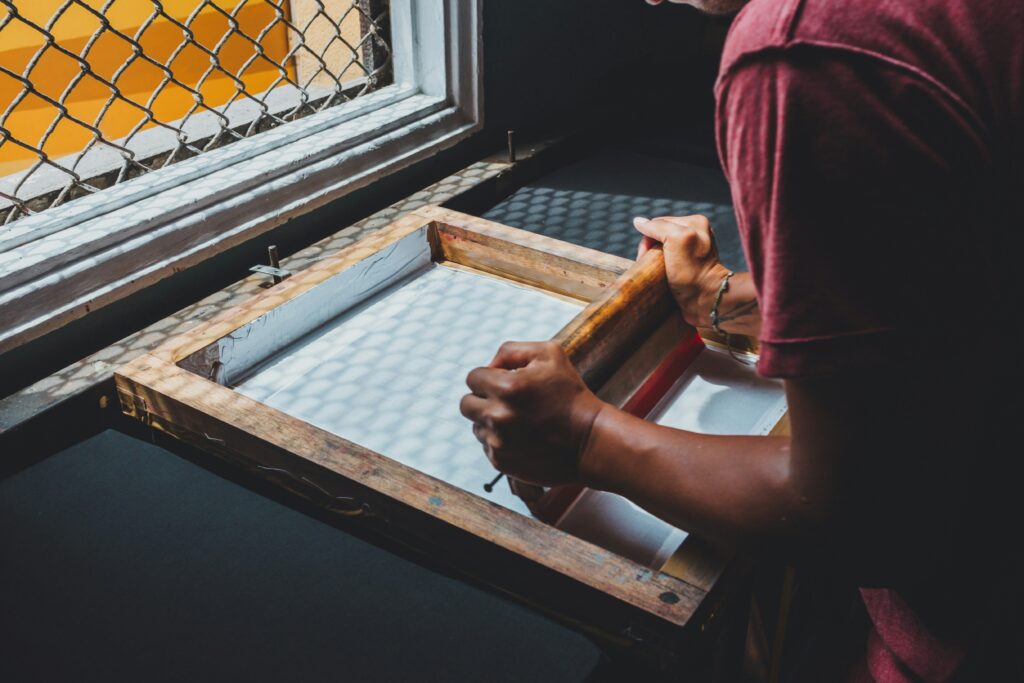
Setup
The first thing that happens when getting ready to start a new project is creating films to push ink through to create your image. To make a new file requires high quality artwork such as a vector file – .EPS, .AI, or .SVG formats. If compressed artwork is used, it will lead to blurry images when printing. A new film or screen is created for every color and every size of logo.
For example, if a logo has three colors and it will be printed on the left chest and the back of the garment. There will be a total of six screens created – three for the size of the logo on the chest and three to create the bigger image on the back of the garment. Just like the embroidery file, these films can be reused over and over but they do have to be cleaned of residual ink leftover from the previous use.
Feel
Items that have been screen printed definitely will be lighter than compared to embroidery. For this reason, it can be used on garments with less structure like t-shirts or sweatshirts. Since inks are being used to create an image on clothing, they will break down and tend to crack over time. This usually occurs after several years of wearing and washing.
Costs
Because there is so much setup involved for screen printing (cleaning films, mixing inks, costs of running the furnace to cure the inks) there is a higher minimum quantity when ordering screen print. Cost to print will be dependent on the number of colors used and the number of locations. The good news is that size of the image does not matter because the amount of ink used isn’t usually a factor.
Advantages of Screen Printing
Printing a high quantity of items is usually less expensive than embroidery. The size of logos/images are more flexible when screen printing. Small text can usually be made smaller when compared to embroidery because the only limitation is getting the ink to feed through the film without being blurry. The same is true when trying to make a large logo. There isn’t the issue of weight or the additional cost when printing a larger image.
When Should I Not Choose Screen Printing?
The cost and labor of setting up for screen printing makes small quantities impractical. These costs are easier to amortize over a higher quantity of items. Also the inks used will tend to crack and break down over time. The feel and look of screen print is better suited to different garments. It is generally not advised to screen print polos or hats and this is for two different reasons.
The general perception is that screen print doesn’t look as professional as embroidery on items such as polos or dress shirts. Hats pose a different issue set by forcing printers to deal with a curved surface and seams in the way. The films have to be pressed flat against the garment or ink can bleed causing a poor quality print. The other issue to consider when screen printing is the type of fabric. Different fabrics tend to shift when printing or they can’t be exposed to the high heat used to cure the ink after printing.
Further Questions on Print vs Embroidery?
The good news is that both methods have been around for a couple of thousands of years. When deciding what is best for your project, we would be happy to have a conversation to discuss the advantages and disadvantages of both.
